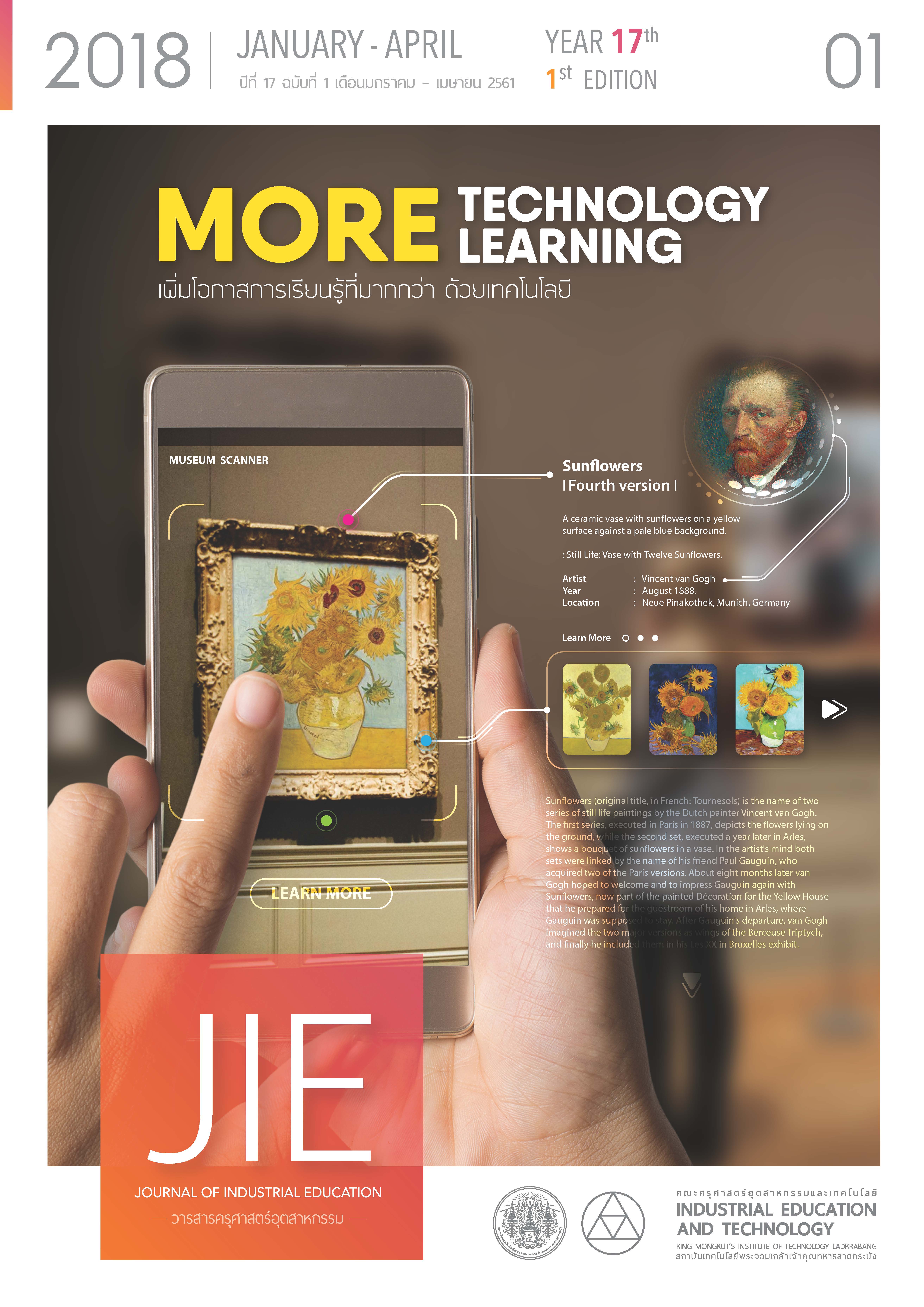แบบจำลององค์ประกอบของการจัดการนักศึกษาสัมพันธ์อัจฉริยะ
Main Article Content
บทคัดย่อ
บทความนี้เสนอแบบจำลององค์ประกอบของการจัดการนักศึกษาสัมพันธ์อัจฉริยะที่เกิดจากการสังเคราะห์แบบจำลองการจัดการลูกค้าสัมพันธ์ทั้ง 4 แบบ คือ แบบจำลอง IDIC แบบจำลองโซ่มูลค่า (CRM Value Chain) แบบจำลองสมรรถนะของ Gartner (The Gartner’s competency model: Eight Building Blocks of CRM) แบบจำลองกระบวนการบริหารลูกค้าสัมพันธ์ (DEAR Model) และทำการปรับปรุงให้เข้ากับบริบทการจัดการนักศึกษาสัมพันธ์ รวมถึงมีการผนวกเทคโนโลยีอัจฉริยะ คือ การทำคลังข้อมูล ส่วนต่อประสานผู้ใช้เชิงสนทนา ระบบพหุตัวแทน และจักรกลเรียนรู้ นอกจากนี้ยังมีการนำเทคโนโลยีเว็บเซอร์วิสมาใช้ในการสื่อสารเชิงเครื่องจักรกลด้วย แบบจำลองดังกล่าวสามารถนำไปประยุกต์ใช้ให้เข้ากับบริบทของแต่ละสถานศึกษาได้ ผู้เรียนจะได้รับประสบการณ์ที่ดีจากระบบการจัดการนักศึกษาสัมพันธ์อัจฉริยะ เกิดความพึงพอใจในการเรียนการสอนและการใช้ชีวิตระหว่างที่ศึกษา รวมถึงเกิดความจงรักภักดีต่อสถานศึกษา และเมื่อสำเร็จการศึกษาเป็นบัณฑิตแล้วก็ยังคงมีความรู้สึกผูกพันและต้องการมีส่วนร่วมในการพัฒนาสถานศึกษาทำให้เกิดเป็นวงจรการพัฒนาคุณภาพการศึกษาที่ส่งผลต่อความมั่งคงของสถานศึกษาทั้งทางด้านงบประมาณ คุณภาพการจัดการเรียนการสอน อัตราการคงอยู่ของนักศึกษาและบุคลากร ซึ่งทำให้เกิดการพัฒนาประเทศอย่างยั่งยืน
Article Details
"ข้อคิดเห็น เนื้อหา รวมทั้งการใช้ภาษาในบทความถือเป็นความรับผิดชอบของผู้เขียน"
References
[2] Maderer, J. 2016. Artificial Intelligence Course Creates AI Teaching Assistant. Retrieved November 5, 2017, from https://www.news.gatech.edu/2016/05/09/artificial-intelligence-course-creates-ai-teaching-assistant
[3] Paura, L. and Arhipova, I. 2014. Cause Analysis of Students’ Dropout Rate in Higher Education Study Program, In Procedia - Social and Behavioral Sciences, 109(January), p. 1282-1286.
[4] Gholami H., et al. 2015. A CRM Strategic Leadership Towards Sustainable Development in Student Relationship Management: SD in Higher Education, In Procedia Manufacturing, 2, p. 51-60.
[5] Lechtchinskaia, L., Friedrich, I. and Breitner, H. M. 2012. Requirements Analysis for a Student Relationship Management System – Results from an Empirical Study in Ivy League Universities. 45th Hawaii International Conference on System Sciences. p. 5132-5141.
[6] Peppers, D. and Rogers, M. 2004. Managing Customer Relationships: A Strategic Framework. Hoboken, New Jersey: John Wiley & Sons.
[7] Buttle, F. 2015. Customer Relationship Management: Concepts and Technologies. 3nd ed. Amsterdam: Elsevie.
[8] Gartner. 2017. Make CRM and Customer Experience a Technical Reality: A Gartner Trend Insight Report. Retrieved November 5, 2017, from https://www.gartner.com/doc/3803481
[9] Wittaya Danthamrongkul and Pipop Udorn. 2006. CRM-CEM Yin Yang Marketing. Bangkok: WongKlom.
[10] Suriya Pumchalerm and Prachyanun Nilsook. 2013. Advisor system based approach to customer relationship for private higher education institution in Thailand. Technical Education Journal King Mongkut’s University of Technology North Bangkok, 4(1), p. 115-121.
[11] Payne, A. 2005. Handbook of CRM: Achieving Excellence in Customer Management. s.l.:Elsevier, ISBN: 0750664371.
[12] Bejou, D. 2005. Treating students like customers. BizEd, 4(3), p. 44-47.
[13] Nair, C., Chan, S., and Fang, X. 2007. A Case Study of CRM Adoption in Higher Education, Proceedings of the 2007 Information Resources Management Association International Conference.
[14] Wilairat Khuncharoen, et al. 2016. The Development of Guardians’ Participation Model in Educational Activities of Secondary Demonstration School in Bangkok. Journal of Industrial Education, 15(3), p. 75-81.
[15] Russell, J. S., Norvig, P. 2010. Artificial intelligence: a modern approach. 3rd Edition, New Jersey: Prentice Hall, ISBN 0-13-604259-7.
[16] The CRISP-DM consortium. 2011. CRISP-DM methodology. Retrieved November 6, 2017, from https://www.the-modeling agency.com/crisp-dm.pdf
[17] Varit Kankaew and Panita Wannapiroon. 2015. System Analysis of Virtual Team in Cloud Computing to Enhance Teamwork Skills of Undergraduate Students. In Procedia - Social and Behavioral Sciences, 174, p. 4096-4102.

